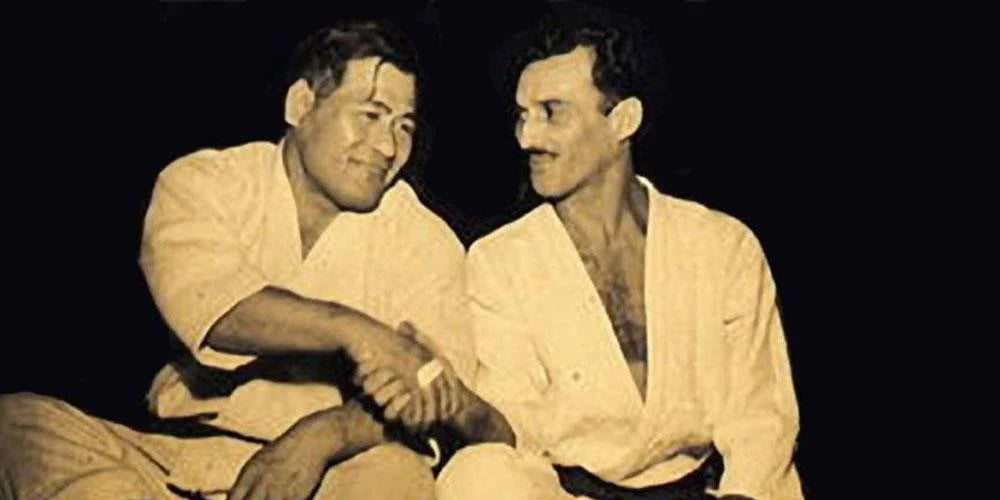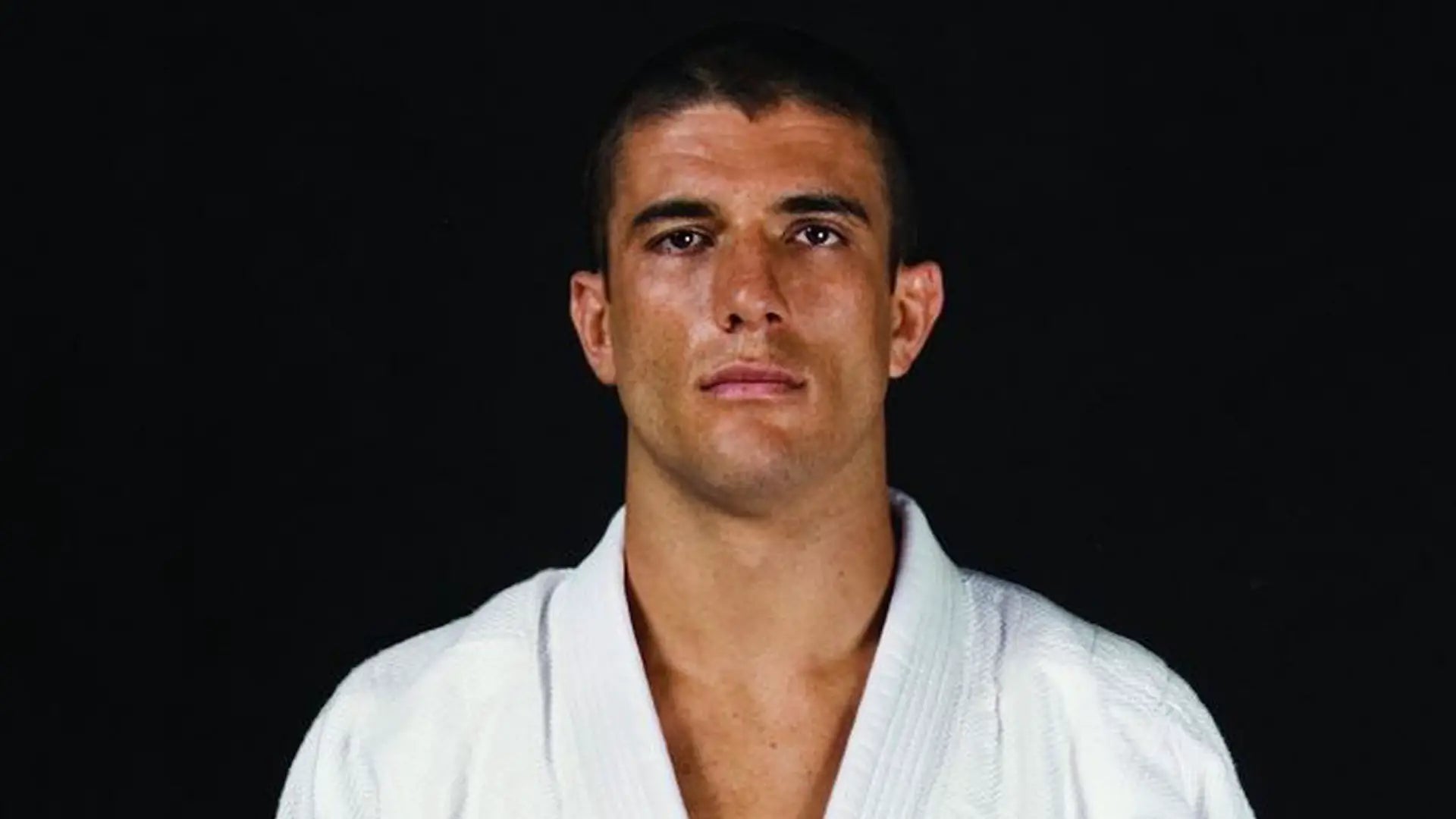Hélio Gracie: The Father of Brazilian Jiu-Jitsu

Hélio Gracie is a name that is synonymous with Brazilian Jiu-Jitsu (BJJ). Born in 1913 in Belém do Pará, Brazil, Hélio Gracie is the youngest of eight siblings, six of whom became renowned Brazilian Jiu-Jitsu practitioners. Hélio was the founder of the Gracie Jiu-Jitsu Academy and is considered the father of modern-day Brazilian Jiu-Jitsu. His legacy continues to influence and shape the sport of Brazilian Jiu-Jitsu even after his passing in 2009.
Early Life of Hélio Gracie
Hélio Gracie was born to Gastão Gracie, a Scottish immigrant and a prominent businessman in Brazil, and his Brazilian wife, Cesalina. The Gracie family lived in poverty, and Hélio was a small and frail child who suffered from health issues like asthma, rickets, and a heart condition. These illnesses forced him to spend most of his childhood indoors, away from other children.
Despite his physical limitations, Hélio Gracie had a passion for sports and was fascinated by his older brothers' martial arts training. His older brother, Carlos Gracie, was the first to learn Japanese Jiu-Jitsu from a local Japanese immigrant, Mitsuyo Maeda. Carlos then taught his younger brothers, including Hélio, the art of Jiu-Jitsu. Hélio Gracie trained in the art alongside his brothers, despite his physical limitations.
Gracie Jiu-Jitsu: The Beginnings
In the early days, Jiu-Jitsu was considered an elitist sport and was only taught to the privileged few. The Gracie family aimed to change that by making the sport accessible to everyone. Carlos Gracie opened the first Jiu-Jitsu academy in Brazil in 1925, and Hélio Gracie became his first student.
As Hélio Gracie continued to train and refine his skills, he realized that his small stature and physical limitations could be turned into an advantage. He started to develop a new style of Jiu-Jitsu that focused on leverage and technique over brute strength. This style would later become known as Gracie Jiu-Jitsu.
Gracie Jiu-Jitsu vs. Traditional Jiu-Jitsu
Gracie Jiu-Jitsu differs from traditional Jiu-Jitsu in several ways. Traditional Jiu-Jitsu is heavily focused on throws, locks, and strikes, while Gracie Jiu-Jitsu emphasizes groundwork and submissions. Gracie Jiu-Jitsu is also less reliant on physical strength and instead focuses on leverage and technique to overcome an opponent.
Another significant difference between Gracie Jiu-Jitsu and traditional Jiu-Jitsu is the concept of sparring. Gracie Jiu-Jitsu emphasizes live sparring, where students practice their techniques against a resisting opponent. In contrast, traditional Jiu-Jitsu often relies on drilling and choreographed techniques.
The Gracie Family: A Legacy of Champions
The Gracie family is a dynasty in the world of martial arts. Hélio Gracie and his brothers Carlos, George, Oswaldo, Gastão Jr., and Helio's younger brother, Francisco, were all accomplished Jiu-Jitsu practitioners. The Gracie family was known for their dominance in the ring, and their style of Jiu-Jitsu was considered unbeatable.
The Gracie family's legacy continued with the next generation of Gracies, who also became accomplished Jiu-Jitsu practitioners. Some of the most notable Gracie family members include Royce Gracie, Rickson Gracie, Renzo Gracie, and Rorion Gracie, all of whom have made significant contributions to the development and popularization of Brazilian Jiu-Jitsu.
Royce Gracie, Hélio's nephew, gained worldwide fame when he won the first-ever Ultimate Fighting Championship (UFC) in 1993. Royce Gracie's success in the UFC helped to popularize Brazilian Jiu-Jitsu in the United States and around the world.
The Gracie Jiu-Jitsu Academy
Hélio Gracie founded the Gracie Jiu-Jitsu Academy in 1952 in Rio de Janeiro, Brazil. The academy was the first of its kind and became the birthplace of Gracie Jiu-Jitsu. The academy was open to anyone who wanted to learn Jiu-Jitsu, regardless of their background or social status.
The Gracie Jiu-Jitsu Academy has produced some of the most accomplished Brazilian Jiu-Jitsu practitioners in the world. The academy has also trained some of the top MMA fighters, including Royce Gracie, Rickson Gracie, and Kazushi Sakuraba.
Hélio Gracie's Contribution to Brazilian Jiu-Jitsu
Hélio Gracie's contributions to Brazilian Jiu-Jitsu cannot be overstated. He is credited with developing the Gracie Jiu-Jitsu style, which is now practiced by millions of people around the world. Hélio Gracie's style of Jiu-Jitsu emphasizes technique, leverage, and timing over brute strength and power.
Hélio Gracie was also instrumental in spreading the popularity of Brazilian Jiu-Jitsu around the world. He traveled extensively, teaching seminars and spreading the word about the effectiveness of Jiu-Jitsu. Hélio Gracie's efforts helped to establish Brazilian Jiu-Jitsu as a legitimate martial art and combat sport.
Hélio Gracie's Legacy
Hélio Gracie passed away on January 29, 2009, at the age of 95. Despite his passing, his legacy continues to influence and shape the sport of Brazilian Jiu-Jitsu. Hélio Gracie's style of Jiu-Jitsu is still practiced by millions of people around the world, and his influence can be seen in the techniques and strategies used by top-level BJJ competitors.
Hélio Gracie's contribution to Brazilian Jiu-Jitsu has also been recognized by the martial arts community. In 1997, Hélio Gracie was awarded the rank of 10th-degree red belt, the highest honor in Brazilian Jiu-Jitsu. Hélio Gracie was the first person to be awarded the rank of 10th-degree red belt in Brazilian Jiu-Jitsu.
Conclusion
Hélio Gracie was a visionary who revolutionized the world of martial arts. He developed a new style of Jiu-Jitsu that focused on technique and leverage over brute strength, and his legacy continues to influence and shape the sport of Brazilian Jiu-Jitsu to this day.
The Gracie family's contribution to Brazilian Jiu-Jitsu cannot be overstated. Their dominance in the ring and their unique style of Jiu-Jitsu helped to establish Brazilian Jiu-Jitsu as a legitimate martial art and combat sport. Hélio Gracie's contributions to Brazilian Jiu-Jitsu have been recognized by the martial arts community, and his legacy will continue to inspire future generations of Jiu-Jitsu practitioners
Overall, Hélio Gracie's life story is one of perseverance, dedication, and innovation. His legacy lives on through the millions of people who continue to practice and study the art of Brazilian Jiu-Jitsu today.
Sources
- "Hélio Gracie: The Father of Brazilian Jiu-Jitsu," Black Belt Magazine, February 2009, https://blackbeltmag.com/he%CC%81lio-gracie-the-father-of-brazilian-jiu-jitsu.
- "Hélio Gracie," Gracie Academy, https://www.gracieacademy.com/pages/helio-gracie.
- "Hélio Gracie: The Founder of Gracie Jiu-Jitsu," BJJ Heroes, https://www.bjjheroes.com/bjj-fighters/helio-gracie-facts-and-bio.



